In February 1997, the world was introduced to Dolly the Sheep. Her birth in July 1996 upended the rules of science, natural selection, reproduction, and opened the philosophical and bioethical debates on cloning. Dolly was the first mammal cloned using the process of nuclear transfer with adult cells. (There had been previous cloning attempts using embryonic cells. Dolly was cloned with adult mammary cells.) She was part of a series of experiments being conducted at The Roslin Institute for the purpose of producing genetically modified livestock. Dolly’s birth proved that an exact copy of the animal the cell came from was not only possible but successful. By 2017, Zhong Zhong and Hua Hua, longtail macaques (monkeys), were the first primates cloned. And primates are even closer to humans in the evolutionary order. But if cells could be used to duplicate and create exact copies, couldn’t they be manipulated to create stronger stock, more intelligent, faster, more intuitive, fatter stock, fluffier stock, etc.?
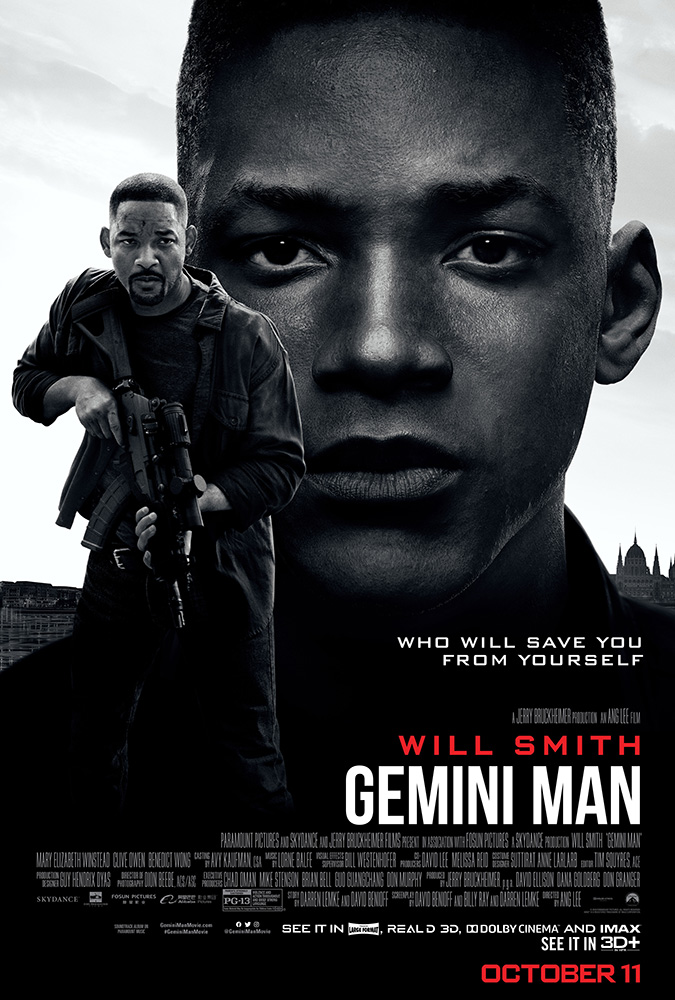
And that is the genesis of Ang Lee’s high-concept GEMINI MAN; a younger clone of a Special Forces veteran at the top of his game with military training, expertise, and unparalleled marksmanship, hired as an assassin for government agencies. The twist is that the clone has “manipulated” DNA, not to mention the love of his adoptive father, which allegedly makes him better than the original. So what happens when they come face-to-face and the original man is now the target of his younger self? This is the ultimate “is it live or is it Memorex” scenario.
There are three major components of GEMINI MAN. The first is the story itself. The second, director Ang Lee’s decision for the film to be lensed with high frame rate stereoscopic technology aka HFR-3D. And the third, the de-aging of Will Smith.

Let’s start with the HFR-3D. To break it down, HFR-3D is a digital format that boasts a frame rate of 60 frames per second. The standard movie frame rate is 24 frames per second. By projecting 60 3D images per second, taken from a second master running 4K at 120 frames per second, the 3D renders the images so they appear as close as possible to what the human eye actually sees. Immersive? Yes. Distracting? Yes, but only to a point and that’s most particularly in action sequences.

Written by David Benioff, Billy Ray, and Darren Lemke and directed by Ang Lee, with the opening sequence of GEMINI MAN, we are dropped into the action, the mind’s eye, and the eye line of Will Smith’s Special Forces sharpshooter Henry Brogan as he readies himself to take out a target on board an express train miles away. Thanks to the HFR-3D, the clarity and sharpness of the imagery are beyond striking, so much so it’s as if you can touch each blade of grass on which Brogan is laying, feel the trigger of the firepower, not to mention seeing every pore of Brogan’s skin. It is quite invigorating to see and experience this very tactile and “sensory” viewpoint. But, as the film progresses, it starts to feel as if one is watching a telenovela or soap opera with the grainier realities of visuals versus the buffering of a cinematic filter. There are only so many pores and nose hairs one can stand watching during a film. But it doesn’t become distracting until some major action sequences unfold, most notably, an absolutely killer chase scene through the streets of Cartagena, Colombia on motorcycles. (And kudos to the stunt guys of Stunts Unlimited who are insanely brilliant in this sequence.) There are moments it feels unreal due to the speed of the action, the speed of the camera, and the 3D, creating a disconcerting viewing in those moments. Having said that, two major action sequences, one, in the dark of night in a hardware store, and the other, underground in Budapest catacombs with an exquisitely lit and designed pool sequence, come off without a hitch, leading me to believe part of the issue with HFR-3D may be shooting in daylight.
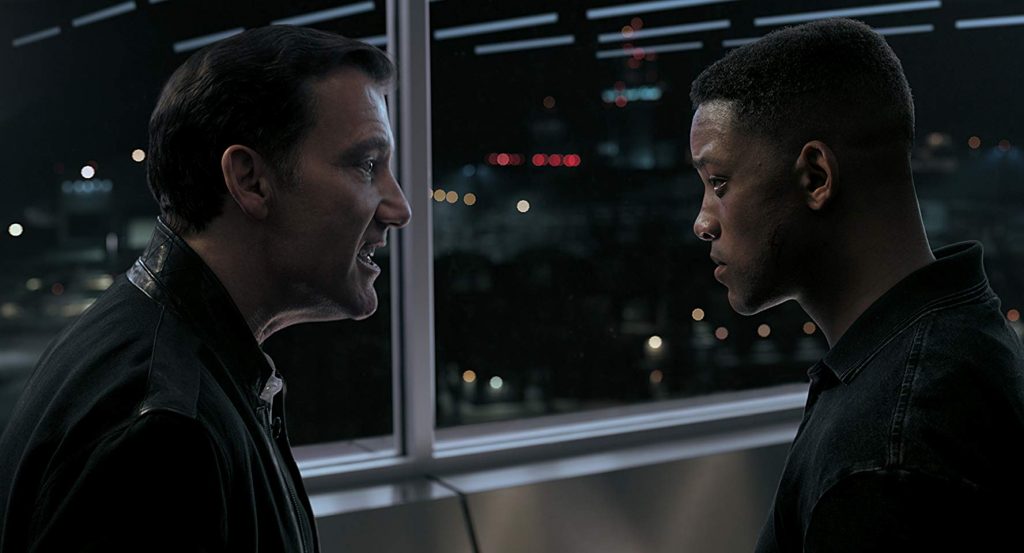
Then there’s the de-aging of Will Smith. It’s actually not de-aging but rather the creation of a 100% CGI human. Thanks to the talents of Weta Digital, masters in the field, it is brilliantly done. We’ve seen quite a bit of de-aging in the MCU with Robert Downey, Jr., Michael Douglas, Kurt Russell, but nothing compares with what we see here with the creation of a 23-year old CGI Will Smith playing opposite the 51-year old human Will Smith. Both a help and hindrance is the fact that the world has watched Will Smith all these decades and knows every look, every nuance, and with the added technology of the HDF-3D is able to scrutinize the work even more closely. It also means that Weta had a lot to work with for visual reference, in addition to motion capture of the real Will Smith for physical and facial movements, “tics”, etc. Amazing doesn’t begin to describe this work.
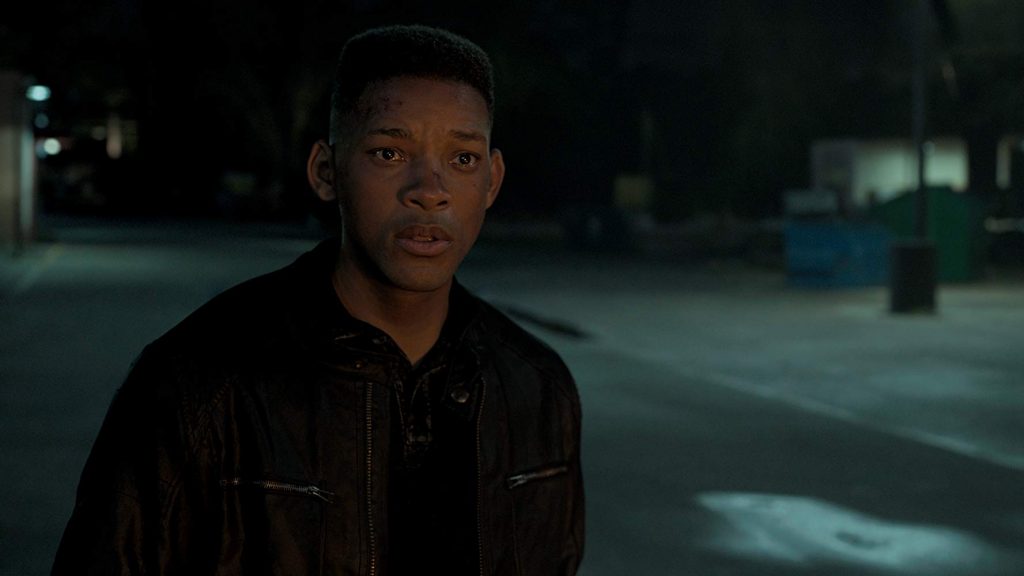
With little exposition, we quickly come up to speed with Henry Brogan’s life. Even though he’s only 51, he’s ready to retire. After 72 kills for the government, he’s hanging up his weapons and heading to his remote cabin near the eastern seaboard to live a quiet, simple life. Maybe do a little fishing. But it doesn’t take long before he gets a call from an old Special Forces colleague who wants to meet with him. There was something about Brogan’s last job, and many others, that wasn’t on the up and up. Brogan was lied to about his target. That man was not a terrorist. Now Brogan wants some answers. And he wants even more answers when he discovers that Danny, the woman running the harbor where his boat is docked, is a former Navy officer-turned-agent assigned to watch him. Why have a retired agent watched? Some of the puzzle pieces start coming together when there is an assassination attempt on his life and that of Danny, sending them on the run, starting with a trip to Cartagena.

With few answers and even more questions, things take an even uglier turn when Brogan is pursued in Cartagena by an assassin who matches Henry move for move, skill for skill. It’s as if he’s in Brogan’s mind. But adding a creep factor, looks exactly like a 23-year old Henry Brogan.
As we learn when this Brogan lookalike returns home after the failed mission aka he did not kill Henry Brogan, we learn that his father, Defense Intelligence Agency head Clay Verris has been working on the “Gemini Project”, a cloning project designed to manufacture enhanced biotech soldiers to go to war in place and instead of human soldiers. With no families attached to these clones, any casualties would be inconsequential. “Junior” as this clone is called, has been raised by Verris as his adoptive son while undergoing intensive physical and military training to become the next Henry Brogan. He was created from adult cells extracted from Brogan by Verris decades ago, at least one year before Dolly the Sheep.

Setting the stage for the philosophical debate on human cloning, DNA manipulation and mutation, and the concept of “nature versus nurture”, we continue on Brogan’s journey to get to the bottom of this assassination plot, not to mention find the corruptors within the DIA and other agencies. These are heavy-hitting themes that warrant deep examination and unfortunately, sometimes get lost amidst all the action in GEMINI MAN.
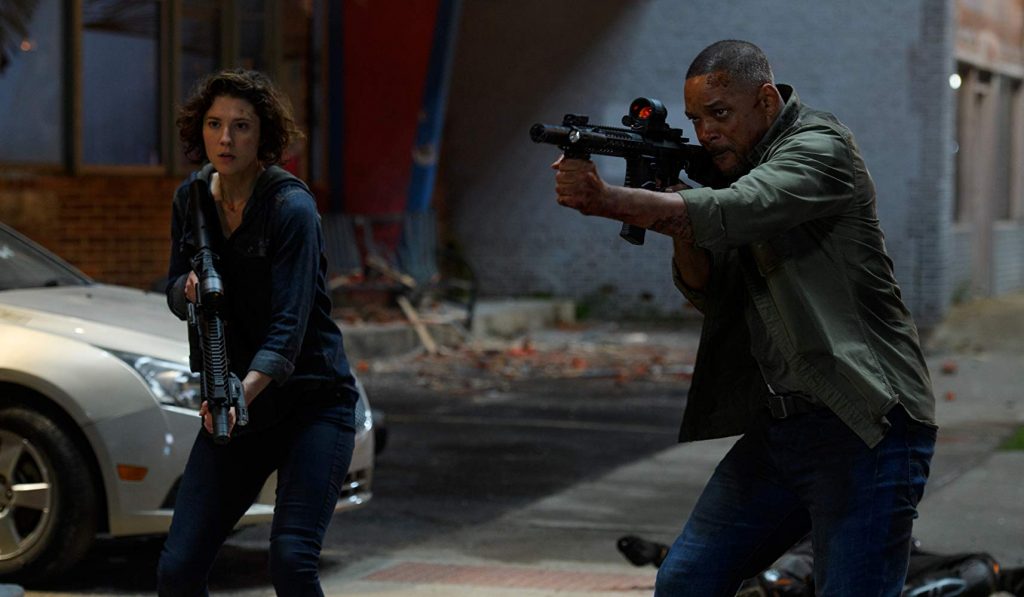
With the next stop in Budapest, things heat up as Danny gets positive confirmation of the identical DNA match between Henry and Junior, while Henry decides to turn the tables on Junior and go against his patented patterns of engagement which Junior seems to know so well. Taking us down into the catacombs for not only a spectacularly choreographed fight, but one that boasts superior lensing (the most beautiful sequence in the film finds them diving into a small pool within the catacombs) and telling metaphor about age, this is truly one of the most immersive action-packed hand-to-hand combat sequences in the film. You’ll find yourself whipsawing between young and old Will Smiths.
Ultimately heading back to the USA and Georgia, the stage is set for the final big set action piece and a showdown with somewhat predictable reveals, but nevertheless exciting to watch unfold with its lensing and fight choreography.
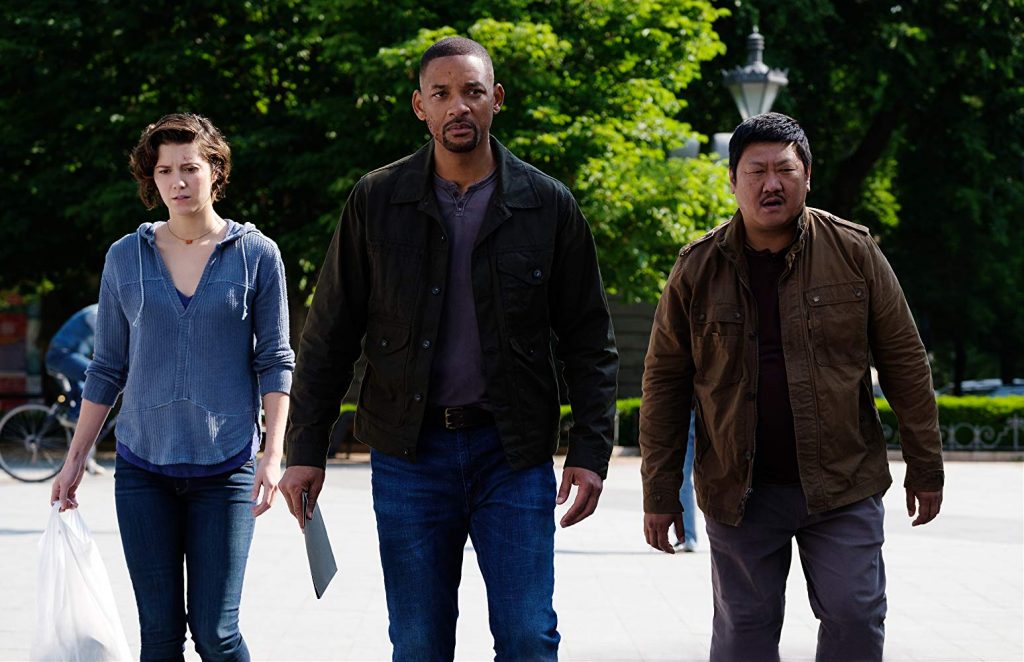
As good as Will Smith is as Henry and Junior (remember, motion capture of him playing the part allowed for the CGI creation of Junior), the real standout in GEMINI MAN is Mary Elizabeth Winstead. Kicking ass and taking names, she is clearly channeling some of her “Lucy McClane” cinematic DNA here. And she’s putting two and two together. Also joining Team Henry is Benedict Wong who is a delight as Henry’s longtime bestie, pilot Baron. Adding some lighter comedic moments to the intensity of action, Wong is pure fun.
It’s not often that we see Clive Owen being dastardly and evil, but that’s exactly what we get here with his take on Clay Verris. Owen has moments where he turns on a dime between paternal love and commanding officer when dealing with Junior, but overall has a venom oozing from him that is both frightening and at times, offensive.

Dion Beebe’s lensing is glorious in its scope, showcasing the beauty of the catacombs in Budapest and the city itself, capturing the serenity of Georgia, the vibrancy of Cartagena, the metaphor of possibility under an inky star-laden moonlit night, and thanks to judicious use of ECU’s and close-up mid-shots of Henry and Junior, we feel not only the confusion within each man but the isolation and loneliness. Being an assassin does come with a price. Complementing Beebe’s work is Tim Squyres editing. Rapier and well-paced, Squyres finds a balance between the heart-pounding action and moments of reflection and introspection.
Almost 25-years since Dolly the Sheep, the same ethical, moral and scientific debates on cloning rage onward. While GEMINI MAN touches on that and has it serve as the catalyst for the action, it would have been preferable to dig a little deeper into that DNA within the story versus the HFR-3D lensing.
Directed by Ang Lee
Written by David Benioff, Billy Ray, Darren Lemke
Cast: Will Smith, Mary Elizabeth Winstead, Clive Owen, Benedict Wong
by debbie elias, 10/03/2019











